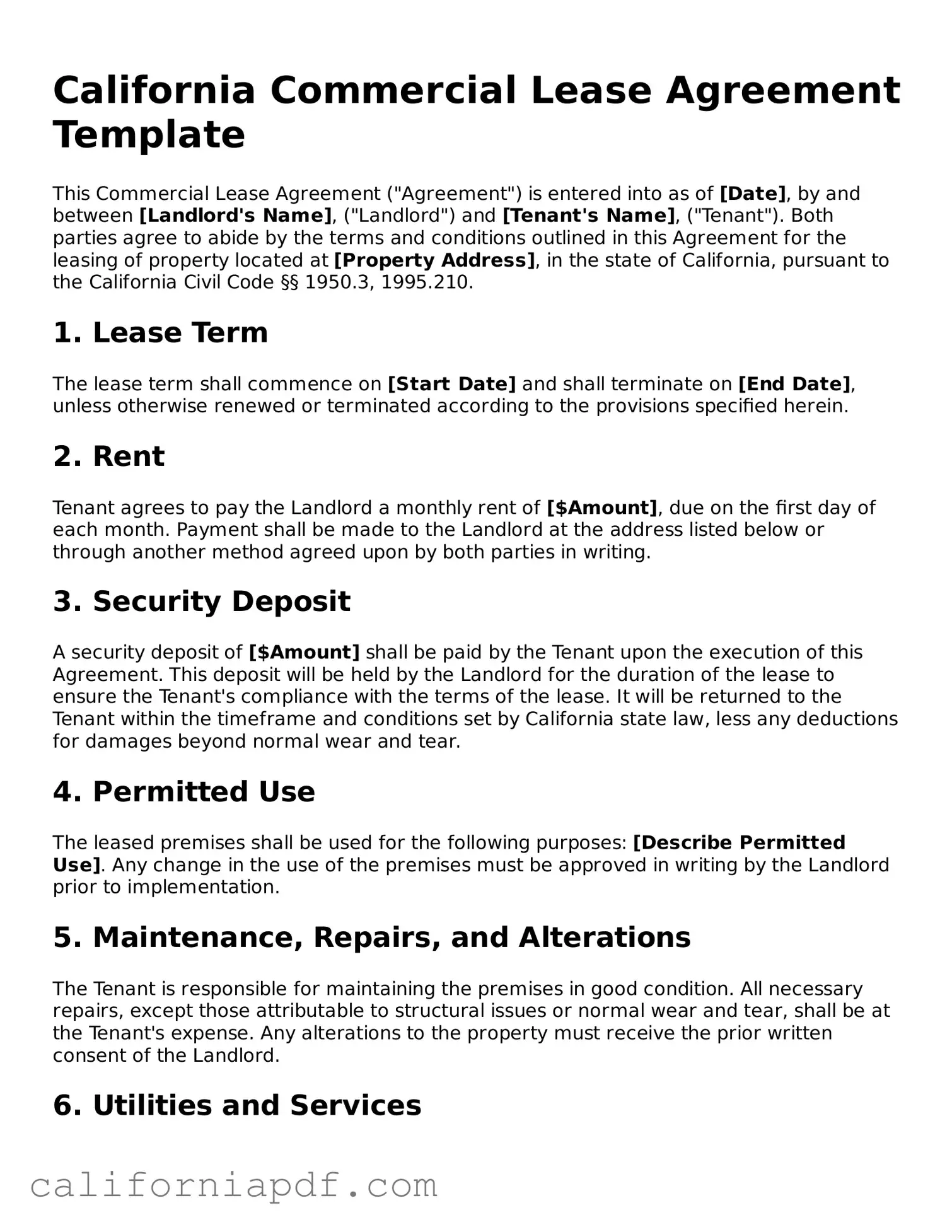California Commercial Lease Agreement Template
This Commercial Lease Agreement ("Agreement") is entered into as of [Date], by and between [Landlord's Name], ("Landlord") and [Tenant's Name], ("Tenant"). Both parties agree to abide by the terms and conditions outlined in this Agreement for the leasing of property located at [Property Address], in the state of California, pursuant to the California Civil Code §§ 1950.3, 1995.210.
1. Lease Term
The lease term shall commence on [Start Date] and shall terminate on [End Date], unless otherwise renewed or terminated according to the provisions specified herein.
2. Rent
Tenant agrees to pay the Landlord a monthly rent of [$Amount], due on the first day of each month. Payment shall be made to the Landlord at the address listed below or through another method agreed upon by both parties in writing.
3. Security Deposit
A security deposit of [$Amount] shall be paid by the Tenant upon the execution of this Agreement. This deposit will be held by the Landlord for the duration of the lease to ensure the Tenant's compliance with the terms of the lease. It will be returned to the Tenant within the timeframe and conditions set by California state law, less any deductions for damages beyond normal wear and tear.
4. Permitted Use
The leased premises shall be used for the following purposes: [Describe Permitted Use]. Any change in the use of the premises must be approved in writing by the Landlord prior to implementation.
5. Maintenance, Repairs, and Alterations
The Tenant is responsible for maintaining the premises in good condition. All necessary repairs, except those attributable to structural issues or normal wear and tear, shall be at the Tenant's expense. Any alterations to the property must receive the prior written consent of the Landlord.
6. Utilities and Services
Unless otherwise agreed, the Tenant is responsible for all utilities and services required on the premises.
7. Insurance
The Tenant agrees to carry commercial liability insurance covering the leased premises with a minimum coverage amount as required by the Landlord. Proof of insurance must be provided to the Landlord upon request.
8. Default and Remedies
In the event of default by the Tenant, the Landlord shall have the right to pursue any remedies available under California law, including but not limited to eviction and recovery of all outstanding rents.
9. Governing Law
This Agreement shall be governed by and construed in accordance with the laws of the State of California.
10. Entire Agreement
This document and any attached exhibits constitute the entire agreement between the parties regarding the leasing of the property. Any modifications to this Agreement must be made in writing and signed by both parties.
Signatures
This Agreement has been entered into on the day and year first above written.
Landlord: _________________________________________ (Signature)
Date: _____________________________________________
Tenant: ___________________________________________ (Signature)
Date: _____________________________________________
